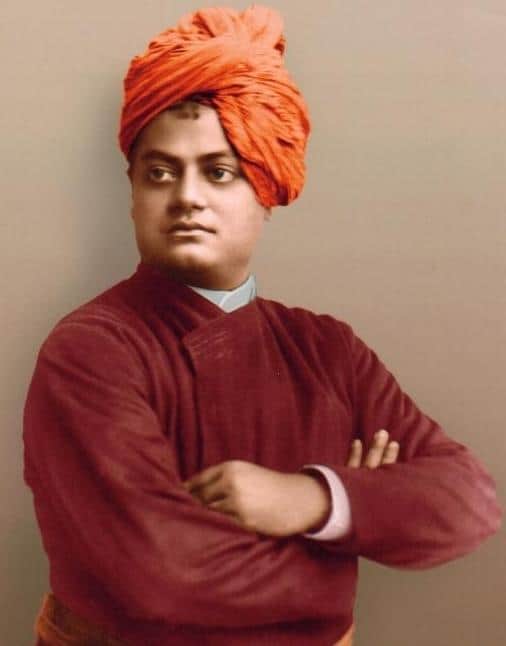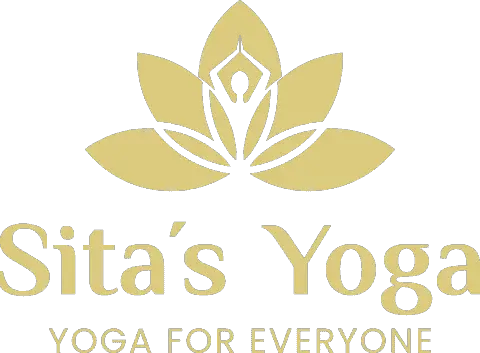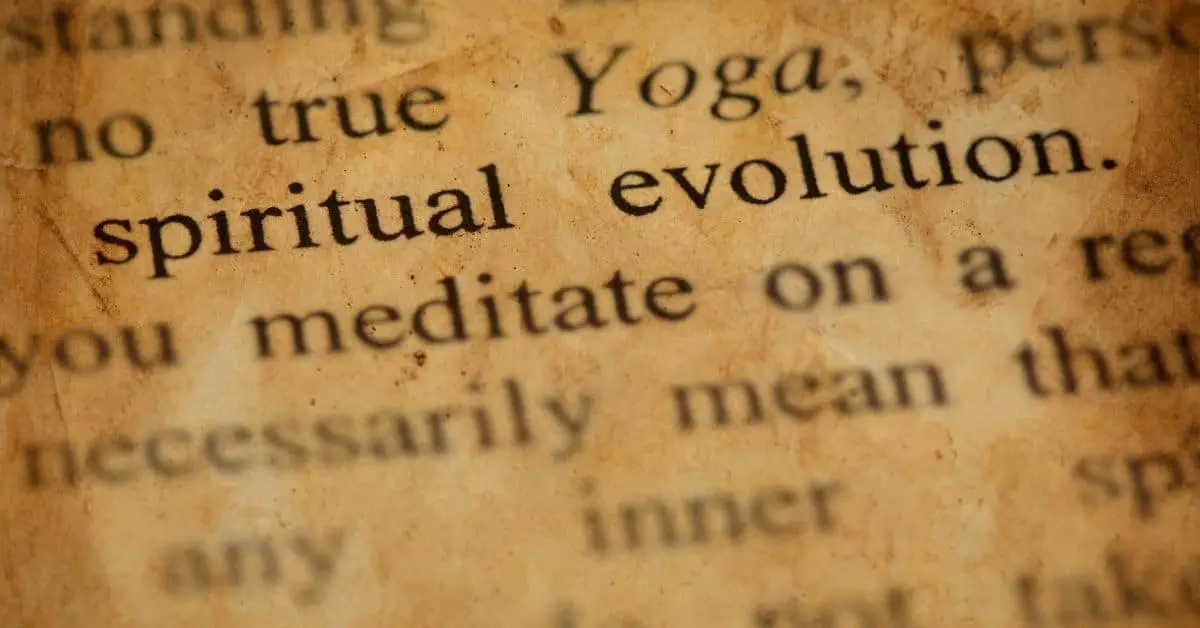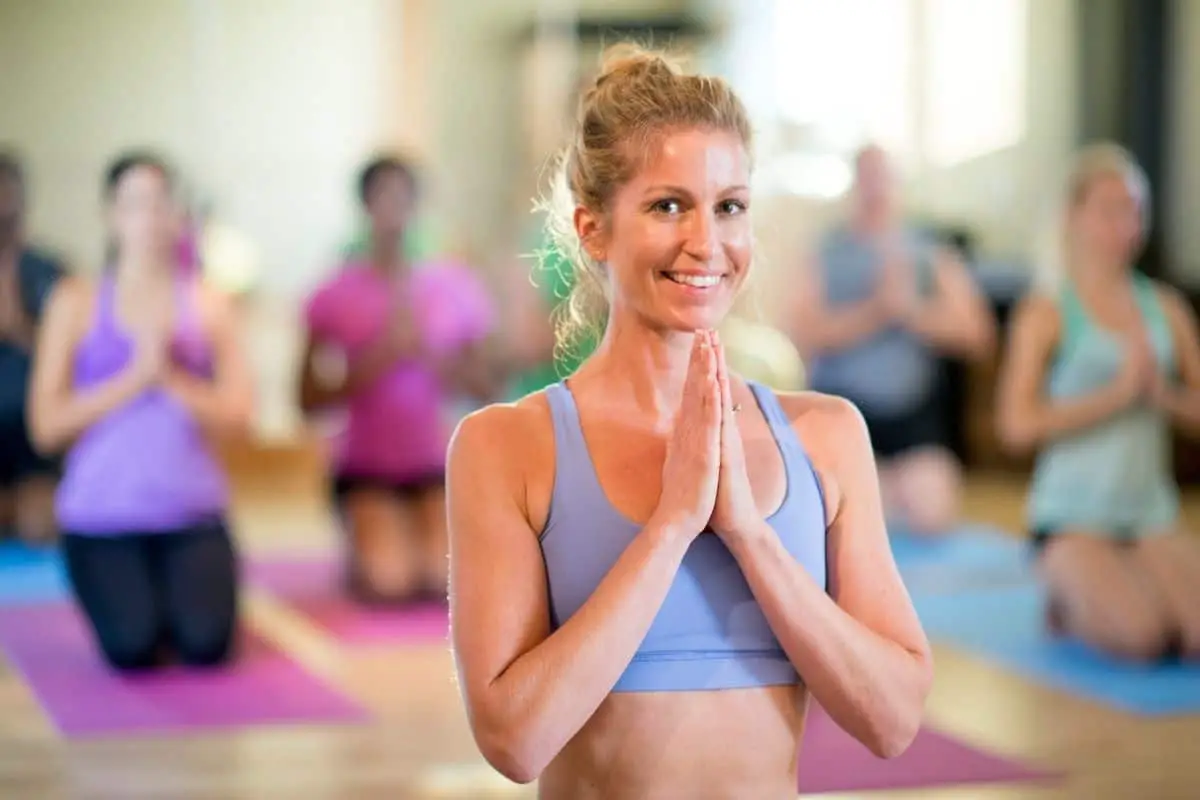Any attempt we make to trace the history of any cultural or spiritual phenomena as it makes its way across nations and overseas can never be an easy task. This applies to the intangible cultural heritage that has spread throughout the world in general and the United States of America in particular. When, exactly, did yoga first become a presence in America?
Though some western intellectuals were interested in Indian culture at the time, yoga philosophy can be said to have been first formally introduced to the United States by means of the speeches, lectures, and talks given by Swami Vivekananda as part of his tours in the early 1890s.
Although Vivekananda played a role in rousing public interest by demonstrating the power and force of yoga philosophy, he did not demonstrate to them what we more readily think of as yoga today. The types of yoga that entail physical asanas or postures were heralded by yogis that came after him. In this piece, we’ll try and delve into the origins and originators of these yoga types in the hopes of gaining a better understanding of yoga’s place in our nation’s history.
1893 – Swami Vivekananda Talks to America
For Americans, the history of yoga and its introduction among us may be convincingly traced to the appearance of one man on the scene – the Hindu monk known as Swami Vivekananda (born Narendranath Datta). In 1893, he had come to the United States as part of an Indian contingent in attendance of the Parliament of the World’s Religions.

This was an interfaith conference held as part of the World’s Columbian Exposition, which was a massive event.
As mainstream as yoga has grown to be a significant player in the massive and continually growing health and wellness industry, we should keep in mind that it was largely unknown and generally misunderstood by the Western world (North America and Europe) until very recently.
Planting the Yoga Seed in the Western World
Even the handful of intellectuals at the time who had some interest in Indian culture and traditions had many misconceptions about yoga and what it was all about. We’re talking about distinguished individuals, prominent thinkers, writers, artists, and such personalities as will often be found at the cutting edge of knowledge and culture.
This particular grouping of luminaries was known as the Concord group, a reference to their geographical presence in the general locale of Concord, Massachusetts, where they would meet and discuss sacred Indian texts that had made their way to them, such as the Bhagavad Gita. Notable members included Henry David Thoreau, Ralph Waldo Emerson, and Bronson Alcott.
Through their correspondences, books, and talks, the Eastern influence would slowly diffuse through American society’s intellectual circles, even though it was still tinged with many errors, exaggerations, and misunderstandings of the subject material. With the average man on the street, the problem was magnified to the point of absurdity.
These misconceptions about yoga in the general population were the natural consequence of being fed endless tall tales of magical deeds and wonders galore in the print media of the day. When you couple this with the countless magicians and stage acts that would get themselves outfitted in robes and turbans for their shows, you can understand why people believed yoga to be a supernatural affair and yogis to be esoteric practitioners in command of these forces.
The establishment of the Theosophical Society to promote Eastern esoteric traditions in the Western world by the indomitable cigar-smoking Russian émigré Helene Blavatsky, whose notoriety was based on her ties to occult practice, didn’t do much to dispel the belief that Indian mysticism and spiritual practice was otherworldly and bizarre.
However, she did much to increase the spread of Indian teachings from the Puranas and Vedas. Such efforts will have undoubtedly made the Western audience curious and perhaps more receptive to the messages to come from the likes of Swami Vivekananda.
The Speech Heard Around the World
When Swami Vivekananda took to the podium to make his speech on that fateful day in Chicago, he offered Americans a genuine, credible insight into what yoga truly represents to the culture and heritage it springs from and what it has to offer to the rest of the world.
He essentially changed yoga in the eyes of the general public from something esoteric, supernatural, and perhaps to be avoided into something they could consider compatible with their daily lives.
He was a college-educated skeptic by breeding but one who also held deep spiritual beliefs. And his personality and charisma made him the ideal diplomat for the representation of yoga to Western Europe’s foreign lands and the United States of America. His own guru, or teacher, was the highly esteemed Ramakrishna, who had great faith in his star pupil’s future.
A seemingly nervous Swami Vivekananda began his famous speech with the words “Sisters and Brothers of America” to which he received continuous rapturous applause before being allowed to proceed.
This, to be fair, seems to have characterized the general tone of the joyful event’s atmosphere. This initial success is considered what gave him the impetus to continue spreading the word about yoga and eventually establish two branches of his Ramakrishna Mission in the United States known as Vedanta Societies.
It has to be said that the yoga espoused by Swami Vivekananda differs in many ways from what we’ve grown to understand whenever the word yoga is mentioned. He presented to his audience at the Arts Institute of Chicago that day was yoga, whose focus was concentrated on self-improvement, philosophy, and psychology.
He delivered his speech on behalf of the “most ancient order of monks in the world”, and in service of a religious belief system whose overall message is one of universal acceptance and tolerance. With subsequent verbal illustrations of how mankind takes different paths but finally comes back to the Lord. Vivekananda struck a chord with the various religious representatives and listeners in attendance and gave yoga a good start to build upon.
It would be a bit much to try and in all of yoga’s success on the shoulders of one man. On the other hand, it is only fair to acknowledge the irreplaceable role he played in laying the foundation for what modern yoga, in all its varied types and iterations, is today.
1920s – Physical Yoga’s Emergence in India
The fact that the version of yoga being advocated by Swami Vivekananda did not include any of the postures (asanas), flowing movements (vinyasas), or rhythmic breathing (ujjayi/pranayama) which we’ve come to associate strongly with yoga was no surprise considering the times.
Traditional yoga practice was much less focused on the physical aspects mentioned above than our modern yoga interpretations are. The more physical aspects of yoga practice began to rise in popularity in the early 20th century.
In Indian tradition, these physical elements were grouped under the term Hatha, and when merged with elements derived from Western physical activities such as gymnastics, Hatha yoga grew to become what we understand as modern yoga. In Indian traditions, Hatha was considered in the same light Westerners viewed physical exercise (PE) or gym class – it wasn’t anything very special, leave alone spiritual.
It should be noted that while all these upheavals were taking place in India, the new ideas being explored were not yet in circulation in the United States. However, Swami Vivekananda had been there to plant the seed of yoga philosophy in their minds. He did not hold to the belief of physical yoga’s effectiveness – at least in so far as his teachings went.
1921 – Swami Kuvalayananda Establishes the Kaivalyadhama Health and Research Institute
Most credit usually goes to making physical or hatha yoga a viable, widely accepted complement to traditional yogic philosophy in India is Swami Kuvalayananda. A disciple of the guru Paramahamsa Madhavadasaji, he was a research scientist, teacher, and accomplished yogi whose contribution to yoga development was his popularization of a new yoga style that emphasized physicality.
His establishment of the Kaivalyadhama Health and Yoga Research Center in India was connected to his efforts to popularize this physically-oriented yoga style. It was an extension of his efforts to develop and disseminate a sound, scientific understanding of yoga practices and how they work to affect our bodies positively.
This stated objective of employing natural laws and universal principles to the study of yoga helped convince many people, including established Western scientists, regarding the effectiveness of physical yoga and its importance in yoga traditions.
Another lasting legacy Swami Kuvalayananda left behind is the Yoga Mimamsa, a scientific journal dedicated to reporting progress in the scientific investigation of yoga. This quarterly journal has been in print since its inception in 1924. It continues to publish test results on the effects and physiological ramifications of asanas, bandhas, kriyas, pranayama, and other yoga elements on the human mind and body.
1922 – Yogendra Mastamani Introduces Physical/Hatha Yoga to America
Alongside Kuvalayananda were two other disciples. One was Sri Gopaldas, who continued practicing and teaching physical yoga in India to high esteem within India. Still, the third one was a young Yogendra Mastamani, who decided to bring with him the teachings and methods of the Kaivalyadhama Center to the United States.
At the age of 22, he embarked on his mission to spread Hatha yoga’s message by establishing the first branch of the Kaivalyadhama Center in Long Island, USA. His efforts involved interacting with various members of the country’s medical community and various health and wellness practitioners. He sought to impress upon them the scientifically-backed benefits of hatha yoga as a discipline, therapeutic method, and healthy lifestyle choice.
After setting up the center and raising as much awareness as possible, he traveled back to India with plans to return later on to continue his work. But travel restrictions imposed on Indian nationals in 1924 made it impossible for him to do so.
It thus seems proper to say that whatever inklings of Hatha yoga that then existed in the United States at this point will have been the direct result of Yogendra’s efforts.
1922 – Pierre Bernard Sets Up Hatha Yoga Classes
One of the most heavily influenced people by Yogendra was Pierre Bernard, who saw fit to begin teaching Hatha and tantric yoga to some of the wealthy and influential residents of Long Island.
His nephew, Theos Bernard, would then travel to India to study further under the direct guidance of Yogendra before coming back to the United States, where he published his great work titled Hatha Yoga: The Report of a Personal Experience.
In it, he expounded upon the eightfold path that lies at the heart of yoga philosophy and practice and detailing what asanas (postures) were and their significance. This book served as a critical guide for those interested in Hatha yoga in the absence of authentic Indian teachers who were still barred from traveling to the United States.
1950 – Richard Hittleman Introduces Yoga to Middle America
Up until this point in time, yoga’s progress in the United States focused on the coastal cities, where people were seemingly more open to new concepts and readily accepting of drastically different ways of treating spirituality and lifestyle choices.
An unlikely believer in yoga and its beneficial qualities took up the responsibility of bringing it to the people living in America’s heartlands. He went by the name of Richard Hittleman. After studying yoga in India for several years, he came back to the USA. He started up his own yoga school, emphasizing the physical aspects and benefits of yoga while leaving out the spiritual components almost entirely.
The reason behind this was not any lack of spirituality on his part – he strongly believed in yoga’s spiritual and esoteric elements – but this perhaps made for a more palatable form of yoga to a still mostly religious American audience.
He hoped that with time and as people grew to understand and appreciate yoga, they would gradually become interested in its spiritual side, which involved meditation and yoga philosophy.
With this approach, Hittleman can be said to have revolutionized the way yoga is taught and practiced in the United States from his time moving on since. Yoga practice can have as little or as much mental or spiritual engagement as you’re comfortable with as a student, which allows it to reach much wider audiences.
It was Hittleman, in fact, who pioneered the broadcasting of yoga sessions and lessons on mainstream television. He also published several books about Yoga.
1965 – Indian Immigration Restrictions Scrapped and American Yoga Booms
As we mentioned earlier, a ban on the free movement into and out of America imposed back in 1924 severely hampered the spread of yoga in America during this period as experienced teachers could not come in to teach those who wanted to learn.
The few teachers who continued pushing the spread of yoga during this restricted window of time were those who had been tutored by gurus before the travel restrictions. And those who managed to travel to India where they would study yoga before coming back to teach it, as we see in Hittleman’s case in the previous section.
Even though yoga was not seeing much progress in the USA, this doesn’t mean that nothing was happening back in India. The pioneers and early adopters of the new Hatha or physical yoga approaches were constantly coming up with new styles that were customized or designed to meet certain objectives or fulfill specific criteria.
Once travel became easier with the repeal of the restrictive act, these teachers were now free to come to the United States and spread their new types of yoga.
Let’s go on with our timeline and look at some of these yoga types and those responsible for developing and describing them to the world.
1966 – Iyengar Yoga Introduced to America
B. K. S. Iyengar was a student of the Hatha yoga revolution in India under Tirumalai Krishnamacharya, who became the author of one of physical yoga’s most authoritative and comprehensive books, Light on Yoga, published in 1966. Highly exceptional for its time, it has been described as the bible of modern yoga, with over 3 million copies sold in at least 23 language translations.
B. K. S. Iyengar was a student of the Hatha yoga revolution in India under Tirumalai Krishnamacharya, who became the author of one of physical yoga’s most authoritative and comprehensive books, Light on Yoga, published in 1966. Highly exceptional for its time, it has been described as the bible of modern yoga, with over 3 million copies sold in at least 23 language translations.
In it, he described over 200 asanas, with additional notes suggesting which areas of the body or body systems they were helpful for, even though any scientific evidence did not accompany these claims. However, they made the book attractive to the new breed of yoga adherents looking at yoga as a form of exercise, with women being the far majority.
In 2002, Time Magazine named him in its annual list of 100 Most Influential People in the world.
His distinctive style places a great deal of emphasis on proper form when it comes to the details, alignments, and precision of the asanas. Iyengar yoga often relies on the extensive use of props such as blocks, belts, blankets, and more to help students achieve the proper alignments and sink into their postures more easily.
This feature of Iyengar yoga is thought to be its most appealing quality. As beginners, the elderly, and even injured or infirm yoga students, will safely and properly achieve the postures in question. The less muscular effort is expended than would be required otherwise.
Having suffered a back injury himself yet still needing to practice yoga, Iyengar knew early on how important props can be when trying to avoid strain or injury while practicing demanding yoga.
1968 – Kundalini Yoga Introduced to America
Yogi Bhajan, officially named Harbhajan Singh Khalsa, is associated with Kundalini yoga’s introduction into the United States.
The reason behind the distinction in this case and other yoga type origins is the fact that what Yogi Bhajan brought to America was an amalgamation of various elements sourced from Hatha yoga techniques, tantric theory, and Sikh mantras.
This doesn’t seem so outlandish when we consider the nature of Kundalini yoga in itself, as originally practiced.
Kundalini yoga is a yoga type that deals specifically with a person’s pranic or subtle energies, which the practice tells us lies somewhat dormant at the base of each person’s spine. Its aim is to activate this energy in the practitioner, helping them move closer to spiritual perfection.
It tells us that our body’s spiritual energy is located at the base of our spines in a coiled, dormant state, which we may cause to awaken and rise through our chakras before being released through the crowns of our heads.
This is considered to be the total manifestation of human consciousness, allowing for the highest creative capacity we’re capable of en route to achieving our maximum potential as human beings. It is the route to achieving one’s life purpose or Dharma.
So we see that Kundalini yoga was initially an almost entirely esoteric practice. Yogi Bhajan combined various elements of diverse yoga traditions, including Hatha yoga, to awaken the body’s subtle energies.
He encouraged his students to live full lives, rather than ascetic, self-deprived ones as per popular yoga philosophies of the day.
It was a favorite with many celebrities, including Al Pacino, Madonna, Demi Moore, and more. It continued to gain mass appeal as a spiritual yoga type suitable for one and all.
1971 – Bikram Yoga (Hot Yoga) Introduced to America

Unlike most of the yoga type originators on this shortlist, Bikram Choudhury did not study under a great guru for years. Still, he was highly effective in introducing and spreading the yoga type associated with his name.
Bikram yoga, otherwise known as Hot Yoga, is a yoga type that is characterized not only by its physicality (includes asanas and breathing exercises) but by the requirement that it be practiced in a room that is heated to 105°F (41°C) and regulated to a 40% humidity. This is meant to imitate the region’s climate it originated from – India – as closely as possible.
A typical class will involve a set series of 24 asanas, a single breathing exercise, and will end with a purification exercise. All this will make for a 90-minute session if followed ideally. This yoga type makes for a highly energetic, cardio-intensive session, favored by many weight loss and management advocates.
Choudhury’s personal persuasion and charisma initially gave hot yoga its foothold in America, where he started teaching yoga in health resorts before eventually setting up his own studio in 1974.
Back in 2006, at the height of its popularity, there were 1,650 Bikram yoga studios located all over the world, although the number has since come down due to various factors.
1975 – Ashtanga Yoga Introduced to America
K. Pattabhi Jois was yet another student who learned Hatha yoga under Tirumalai Krishnamacharya before developing his style of physical yoga. After studying with his teacher for almost 25 years, he developed a yoga method known as Ashtanga Vinyasa Yoga or Power Yoga to some.
Pattabhi Jois himself disassociated himself from the power yoga movement, stating that it did not hold to the precepts of his Ashtanga Vinyasa yoga style. Even so, the styles hold enough in common to merit a singular categorization, which is what you will encounter in most yoga studios today.
While still in the yoga center, he established in 1948 in the region of Lakshmipuram for the purpose of teaching his new yoga type to Indian students; he received a Belgian student by the name of Andre Van Lysebeth.
After spending two months going over the basics of Ashtanga Vinyasa Yoga with Jois, Van Lysebeth went back to his native land and published a book titled Yoga Self Taught (J’apprends le Yoga) in 1967.
This work served to spark Westerners’ interest as it mentioned Pattabhi and informed readers of where they could find him in India, where he had now established his base at Mysore. Many Westerners traveled to Mysore in order to study with Jois before coming back to practice and teach yoga to others, making him one of the most influential teachers of yoga.
He strongly believed in the concept of parampara, which stated that authentic yoga knowledge could only be passed on from guru to pupil over many years of studying in close proximity. This is what spurred so many to make the frequent journey to Mysore in search of the hard-to-obtain certification from Pattabhi as a certified Ashtanga Vinyasa Yoga lineage carrier and qualified teacher.
This made Ashtanga Yoga teaching certifications some of the most difficult to obtain in the yoga field. You will even find, to this day, yoga studios offering Mysore-style yoga, in which you can expect Ashtanga Vinyasa Yoga to be taking place.
Now, Patthabi Jois made his first trip to the United States in 1975, where he spent half a year teaching in California. Although many of his students were practicing his type of yoga in America, this is when many consider Ashtanga Vinyasa Yoga to have truly made its appearance on the American landscape.
Final Thoughts
The origins and trajectories of yoga throughout the world in general, and America in particular, are more than we can put in perspective in one simple article. The sheer number of inputs, influences, innovations, improvisations, and bold moves makes it impossible.
Even with that said, there are notable figures and milestones captured in the annals of history, which we’ve tried to touch on in the article preceding briefly. Every year on June 21st, the International Day of Yoga is celebrated across the world, no less enthusiastically by America’s 36.7 million yoga practitioners.
The arrival of yoga in America was, is, and will always be a positive event, whether it happened ten or ten thousand years ago.
Sources
- Beezone: Yoga in America
- History, Arts and Archives US House of Representatives: Immigration and Nationality Act of 1965
- Yogajournal: The Timeline and History of Yoga in America
- Wikipedia: Yoga
- Wikipedia: Yoga as exercise
Sitasyoga.com is a participant in the Amazon Services LLC Associates Program, an affiliate advertising program designed to provide a means for sites to earn advertising fees by advertising and linking to Amazon.com. We also participate in other affiliate programs which compensate us for referring traffic.







